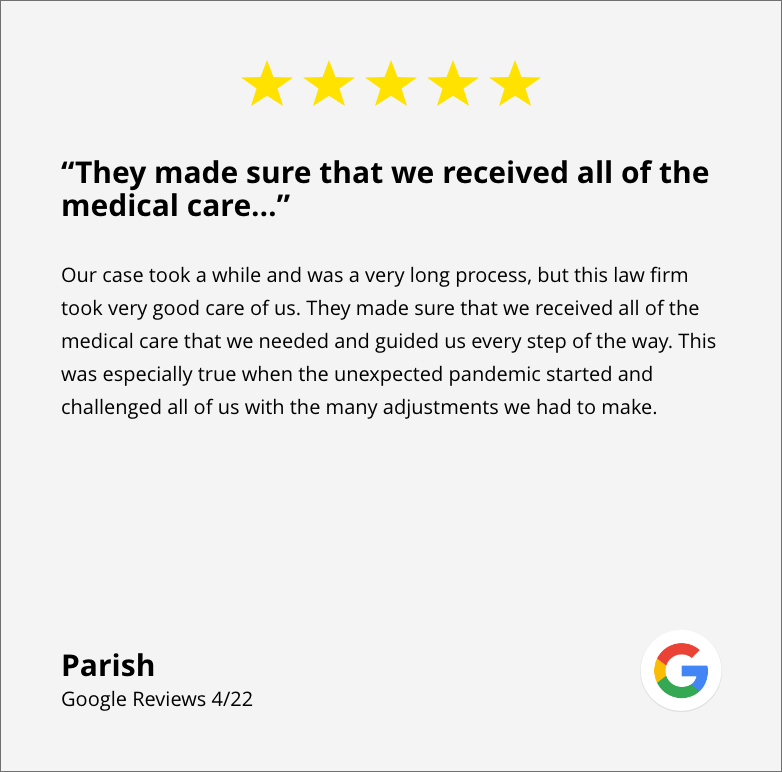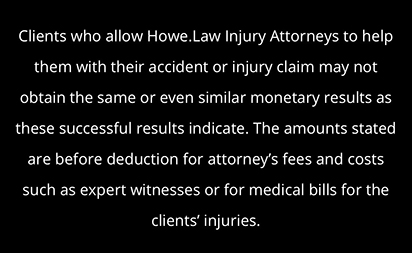The damages that you can claim after an injury usually cover tangible, financial harms that you face. That includes things like medical expenses, vehicle damage, other property damage, lost wages, and more. However, you can often claim pain and suffering damages as well – but these and other “non-economic” damages are often more complex to calculate.
Pain and suffering is typically calculated by trying to put a price on all of the emotional distress, lost enjoyment of life, and – of course – pain and suffering that you face after an accident. In Georgia, this can mean using a per diem calculation method or a multiplier method to get a baseline amount. Your attorney can argue for what damages you can receive, fighting for potentially higher damages than these calculations.
If you were hurt in an accident, call the Georgia personal injury attorneys at Howe Law today at (844) 876-4357.
What is Covered by Pain and Suffering Damages in a Georgia Personal Injury Case?
Before going into how these damages are calculated, it is important to understand what exactly pain and suffering damages are. As mentioned, pain and suffering covers a wide range of damages. All in all, the term “pain and suffering” is often used interchangeably with “non-economic damages,” and it is often used as a wide umbrella term to capture any sort of injuries and harm that are not expressed by a monetary value.
For example, if a driver sees the accident coming and becomes suddenly afraid of the crash, that fear is a real harm that they faced, and it can be included in pain and suffering. Similarly, if they crash and are injured and lose a leg in the accident, they will face additional harm from the stress of that injury, the fear they will lose the leg, the pain and suffering of the surgeries, the discomfort and struggle during recovery, and the lost enjoyment of life going forward after an amputation.
All of these and more can be included under the term “pain and suffering,” and you should usually consult with an Atlanta personal injury lawyer for help understanding exactly what harms in your case fall under this umbrella.
Methods of Calculating Pain and Suffering in Georgia Injury Claims
Since pain and suffering covers a wide range of effects, it is often difficult to assign a dollar amount to each of these harms and claim those damages in court. Instead, insurance companies and courts often use one of two methods of calculating damages in a simplified way:
Per Diem Method
The per diem (i.e., “per day”) method assigns a dollar amount that you face in pain and suffering damages per day. You then calculate the total pain and suffering damages by multiplying that amount by the number of days you faced pain and suffering.
If your injury happened on a specific day and then the pain and suffering lasted for a set number of days after that before ending, this method is sometimes best. If your injury is long-term or will last for the rest of your life, then it might be harder to apply this kind of calculation to your case.
To arrive at a per diem value, courts often start by looking at your wages. The assumption here is that the stress and strain of injury could be compensated by paying you your normal wages for every day you experience pain and suffering. This often misses the clear issue that one’s job typically has no effect on how bad their injury is, but it can nonetheless create a good starting point for valuing your pain and suffering damages.
Multiplier Method
With the multiplier method, courts and insurance companies assign a multiplier score to your pain and suffering. Long-term injuries usually get a higher multiplier than short-term injuries. The multiplier is also increased for permanent injuries, very severe injuries, injuries that affect your day-to-day activities, and any other injuries that could be considered objectively worse.
The rest of your damages from medical bills, lost wages, and other sources are then totaled up, and they are multiplied by this multiplier to arrive at a value for pain and suffering damages. This type of calculation is somewhat simple and easy, but it often reduces many different factors about someone’s life and someone’s pain down to a small number. It is also criticized for being arbitrary, as it is imprecise to tell the difference between – for example – a 4 and a 4.5 when choosing multipliers.
Generally, multipliers fall between 1.5 and 5.
Your Personal Injury Lawyer’s Role in Calculating Pain and Suffering in Georgia
Your attorney will be an indispensable help when calculating pain and suffering damages in your case.
First, practicing injury attorneys often have more experience dealing with injury cases and know from past cases what amounts judges and juries are usually willing to award for various types of injuries. There is no set amount for each type of injury, but your attorneys’ combined experience will help you determine how your case stacks up to other cases and how high your claim should be for pain and suffering.
Second, your Macon, GA personal injury lawyers will perform the initial calculation. Often, this means consulting with experts and hiring doctors, psychiatrists, and others to analyze your claim and opine on how severe the injury, the emotional distress, and the other effects are.
Third, your attorneys will be the ones submitting your demand for damages to the defendant and their insurance companies. They will be the ones ultimately justifying the claim for damages by presenting evidence and arguments that the damage calculations are valid. In many cases, your lawyer will also argue that the base calculation from either method mentioned above is insufficient and that it should be adjusted upwards for various reasons. O.C.G.A. § 9-10-184 confirms that your attorney also has the chance to include such arguments before the court, usually in their closing arguments before jury deliberation.
Call Howe Law’s Georgia Personal Injury Lawyers Today
For help with your case, call Howe Law’s Columbus personal injury attorneys at (844) 876-4357.
Related Articles


























































